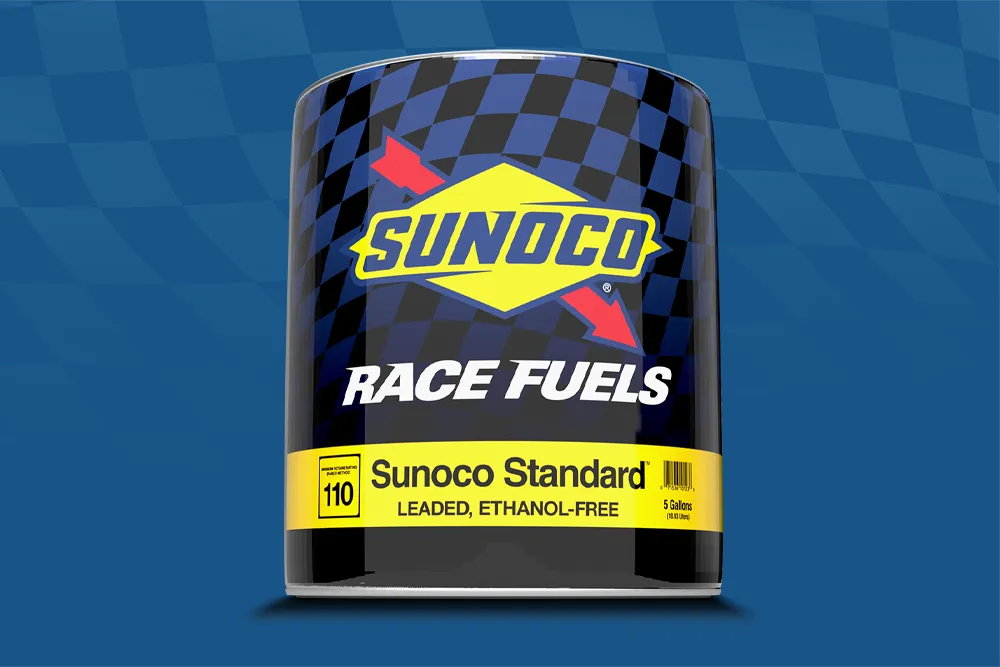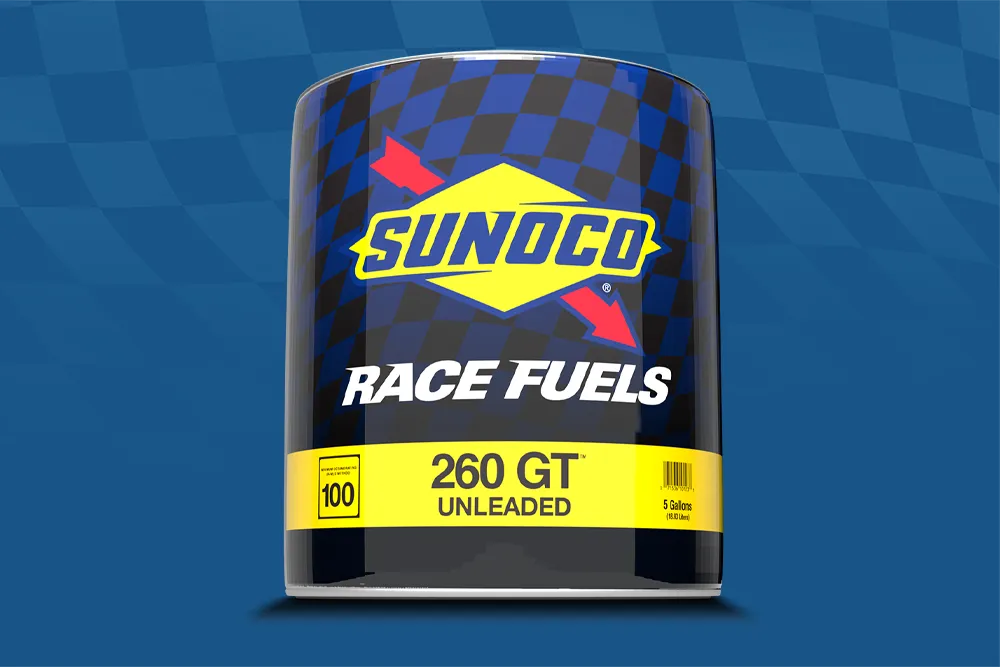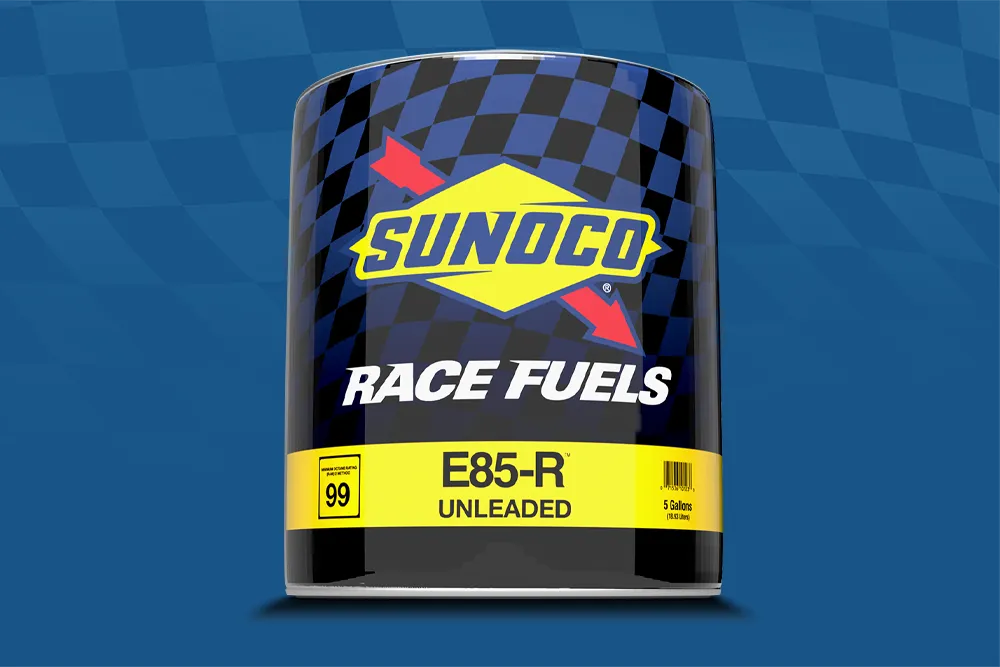Leave Your Competition in the Dust
More and more engine builders, racers, tracks and sanctioning bodies choose Sunoco over all other racing gasoline. For over 50 years, Sunoco has fueled top race car drivers around the world with high-quality performance fuels powering them to the checkered flag.
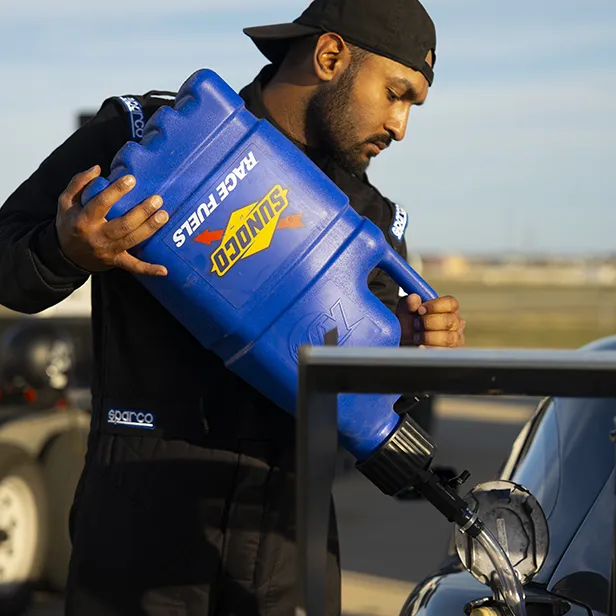
Sunoco Octane Ratio Guide
Download our Octane Ratio Guide to calculate how many gallons of 260GT or SS100 are needed to make 10 gallons of 91-99 octane fuel.
Get the most out of your engine
Find an authorized Sunoco Race Fuels dealer near you.
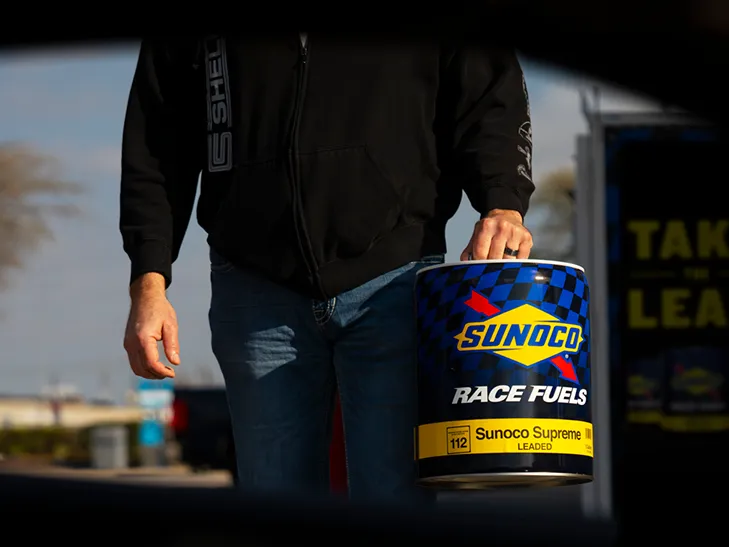
Frequently Asked Questions
What is race fuel, and how does it differ from standard gasoline?
From the start, race fuels are typically cleaner and more consistent than pump fuels. The reasons why are due to economics and environment. Pump gas is a product largely driven by cost, and standards allow a certain amount of agents that over time can cause gum and varnish. Since a tank of pump gas is usually consumed fairly quickly, the presence of those agents is rarely noticed by the consumer.
Race gas is produced for a more exacting consumer, so quality and consistency become the driving factors. According to Zachary J. Santner, senior specialist of quality at Sunoco, race gases start with a base product that, in rough figures, can be called 10 times cleaner than its street-bred counterparts. A tangible benefit of that cleanliness: Race fuels are a lot more stable and can be stored for at least two years without any noticeable changes.
Then there’s consistency. As per EPA standards, pump gas formulas vary based on season and location. A winter-blend fuel, for example, is formulated to produce quick starts in cold weather. During the summer months, though, that winter fuel would lead to increased emissions. Altitude, local air quality and other factors can further affect the blend, and the end result can be dozens of variations for just a single brand and grade of fuel. Race fuels, Santner continues, are consistent. They come from one source, and the formula never changes. Running race fuels simply eliminates one variable from the equation.
What are the benefits of using race fuel in high-performance engines?
Higher-octane fuels are more resistant to engine knock than lower-octane options. This is why most high-performance engines require higher-octane fuels–in the simplest of terms, these fuels are more compatible with increased cylinder pressures, whether they’re due to the compression ratio, engine speed or boost pressure.
There’s another advantage of higher-octane fuels: They’re more stable when it comes to storage. As explained by Technical Specialist Zachary Santner, “87-octane fuels tend to be less refined and contain more unstable hydrocarbons. As the months pass during storage, these unstable components react to form gums, varnishes and lower-octane hydrocarbons. As a result, the octane can decrease within months for 87-octane fuels, especially when stored under less-than-ideal conditions.
“93-octane fuels are more refined and contain more stable hydrocarbons. These stable hydrocarbons can last two to three times longer than those in 87-octane fuel. Even with proper storage, 87-octane gas can start to degrade in three months; 93-octane fuel should last closer to 9 months before degradation is noticeable. Keep in mind that 93-octane fuels are still susceptible to octane loss and vapor pressure decreases due to butane evaporation.”
Race fuels, though, are a slightly different matter. Where street fuels are blended to meet a price point, race fuels feature better ingredients that lead to longer shelf life. If properly stored, Santner adds, Sunoco’s race fuels can sit around for two years or more without degrading.
Why do race fuels often contain lead additives?
It’s been many decades since lead began to be phased out of pump gas. Most racers today don't know what it was like to "fill 'er up" with leaded pump gas. Understandably, we get a fair amount of questions about lead and why it’s used in some racing fuels.
Lead is an element (symbol Pb) and has a number of industrial uses. For racing fuels, lead is not used by itself... it's actually added in the form of a mixture called Tetraethyl Lead (TEL). TEL is a liquid which makes it easier to store and mix into racing fuel.
Lead is used in racing fuels because it's a very effective octane booster. As a matter of fact, leaded fuels are often credited for allowing higher compression, higher efficiency engines in World War II era aircraft. Increased power made some WWII airplanes like the P-51 Mustang legendary performers!
Just a little bit of lead in gasoline can raise octane by about 20 octane numbers. This is why you don't see many unleaded racing fuels with octane ratings much over 100, while their leaded counterparts can get close to 120 octane.
Another advantage: lead doesn't have a significant effect on combustion properties like flame speed. This allows us to specify certain hydrocarbons in a blend to achieve desired fuel properties, then add varying amounts of lead to target an octane level. This is why the myth about high octane fuels burning slower is exactly that – a myth.
Find more of our race fuels on


